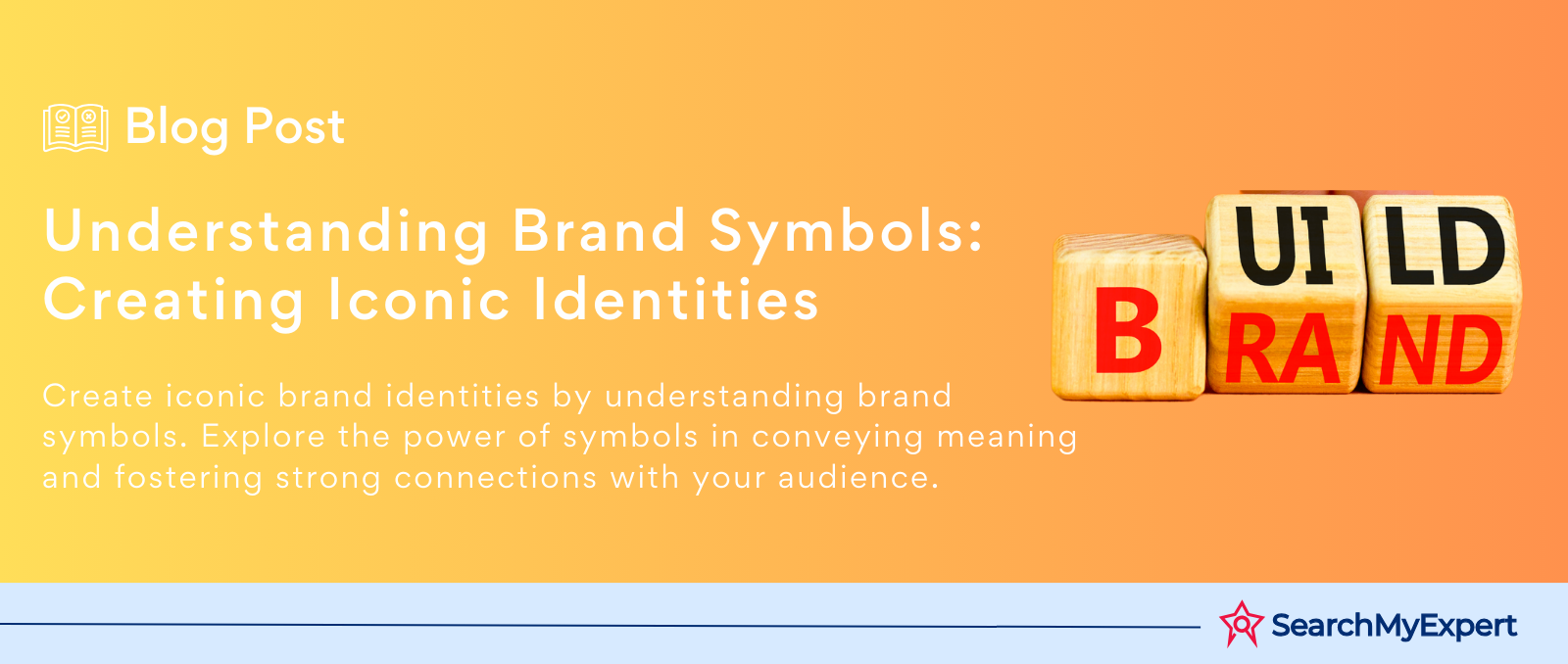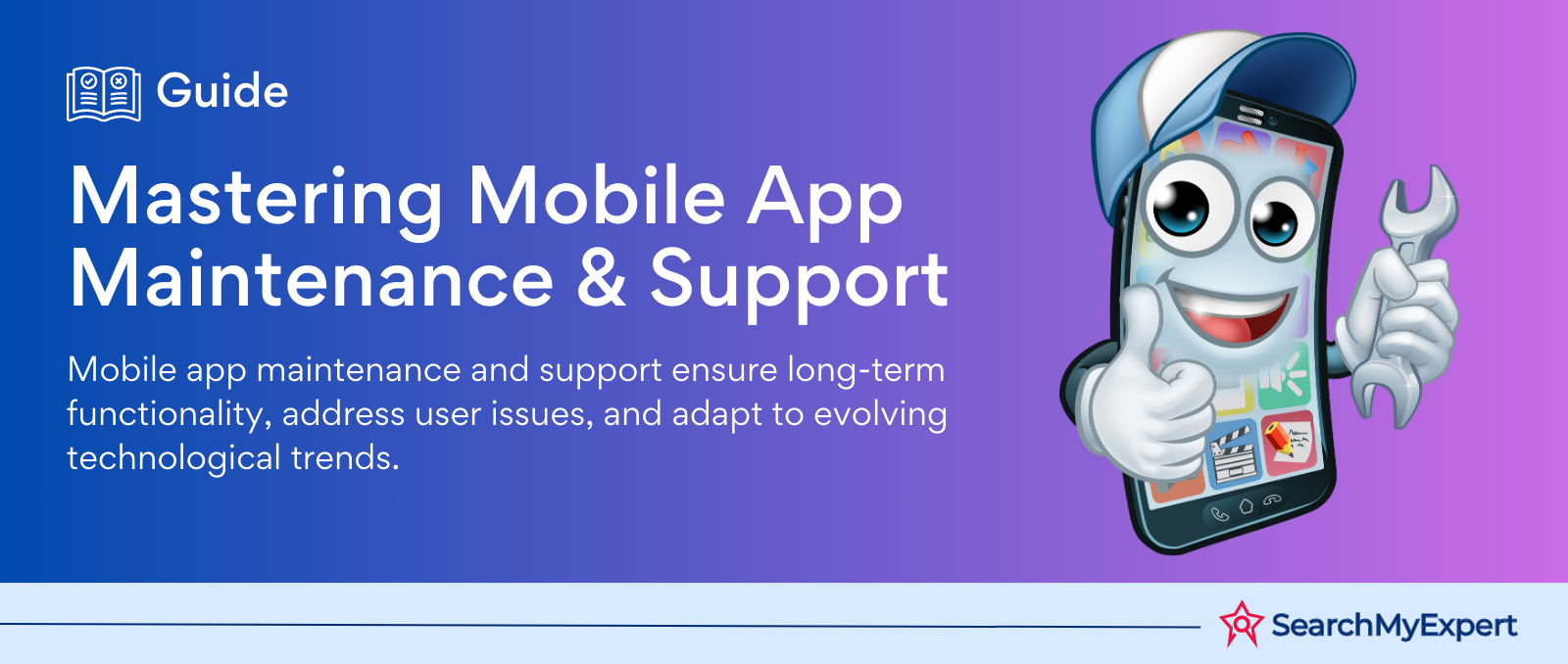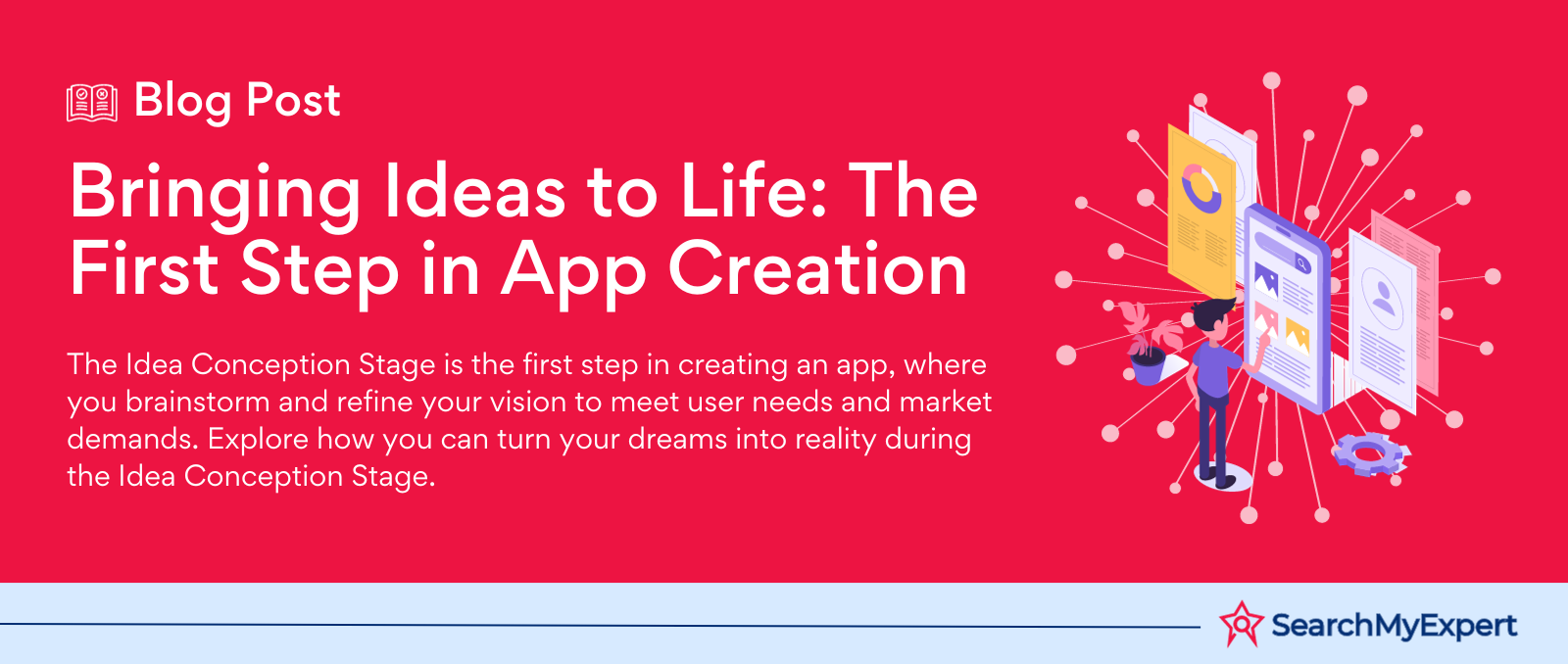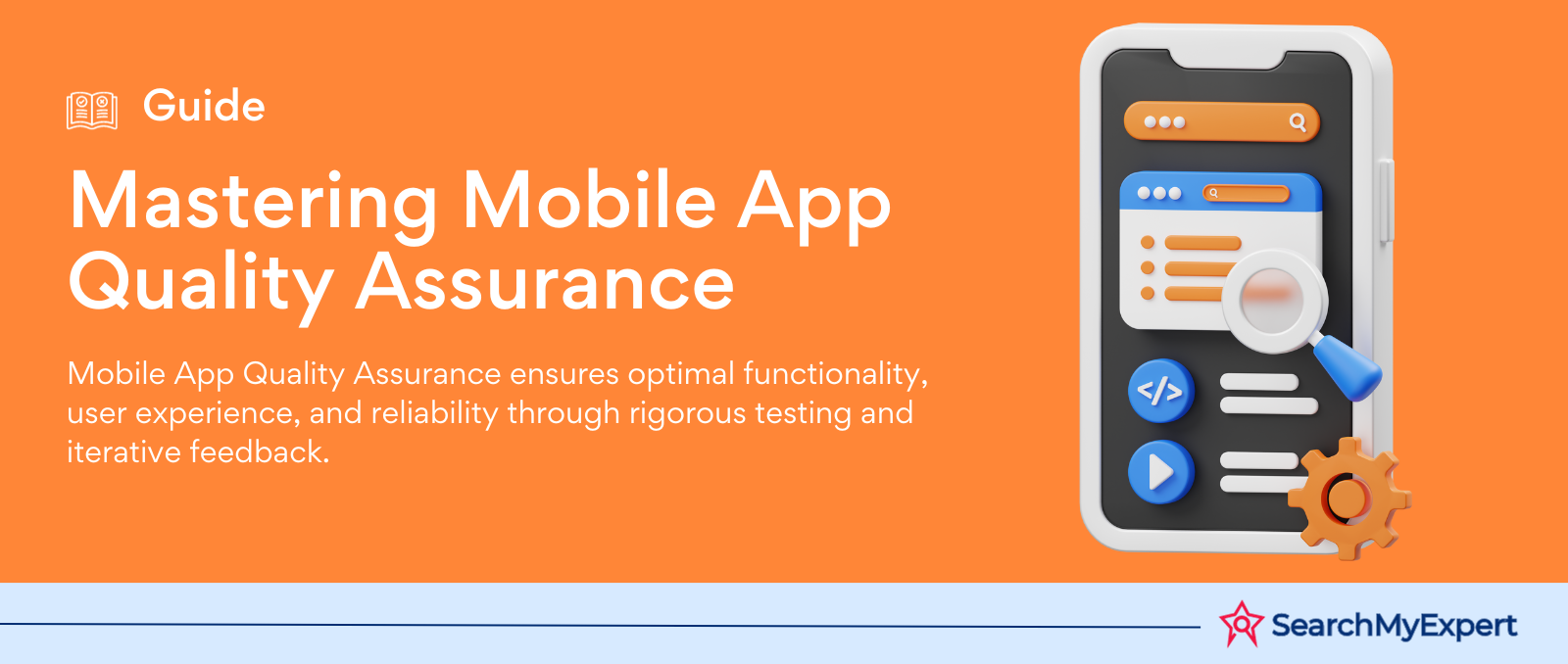Hey there, awesome visitor! 👋 Our website is currently undergoing some nifty upgrades to serve you even better. But don't worry, we'll be back before you can say "SearchMyExpert rocks!"

The Power of Symbols: Crafting Iconic Brand Identities
The Significance of Symbols in Communication
In the realm of communication, symbols and icons stand as mighty champions, wielding the power to transcend linguistic barriers and resonate with a vast array of audiences. They are silent storytellers, conveying messages and emotions without uttering a single word. Symbols are universal, cutting across cultures and languages, making them an indispensable tool in the global marketplace.
The Intersection of Brand and Visual
When it comes to branding, the logo is the face that the world sees. It's not just a mark; it's the visual embodiment of the brand's identity, values, and aspirations. In this visual-centric era, logos infused with symbols and icons are not just art; they're strategic business tools. They serve as the cornerstone of brand identity, making a brand recognizable, memorable, and influential.
Incorporating symbols into logos is more than just an aesthetic choice—it's a strategic one. Symbols can encapsulate complex ideas and emotions, transforming them into a simple yet potent visual language. This visual language becomes the brand's silent ambassador, conveying its essence and values in an instant.
Beyond Words: The Limitations of Text-Based Logos
While text-based logos have their strengths, they come with inherent limitations. Words can be constrained by language barriers, potentially alienating or confusing international audiences. Moreover, in our fast-paced digital age, where attention spans are short, a lengthy text logo can fail to make an immediate impact.
This is where symbols enter the spotlight. They offer a more concise and impactful alternative. A well-designed symbol can capture a brand's essence, convey its message, and leave a lasting impression, all without saying a word. Symbols are not just an element of design; they are a powerful communication tool, capable of telling a brand's story in a universal language understood by all.
Choosing the Right Symbol: A Guide to Meaningful Branding
Brand Values and Attributes
Aligning Symbols with Core Brand Values
When it comes to choosing the right symbol for a brand, the alignment with the brand's core values and attributes is paramount. A symbol is more than just a visual element; it's a reflection of what the brand stands for. It must resonate with the essence of the brand, echoing its mission, vision, and ethos.
How to Match Symbols with Brand Values
- Understand the Brand's Core: Delve deep into the brand's mission, vision, and values. Understand what the brand aims to represent.
- Symbol Research: Analyze symbols that have historical, cultural, or contemporary relevance to these values.
- Visual Metaphor Creation: Develop a visual metaphor that aligns with the brand's core values, ensuring it's a true representation of the brand's identity.
Cultural Context and Recognition
Navigating Cultural Meanings
In a globalized world, understanding the cultural context of symbols is crucial. Symbols can carry different meanings in different cultures. What is considered positive in one culture might be offensive or misunderstood in another. Therefore, it's essential to research and understand the cultural implications of symbols to ensure they are appropriate and respectful.
Avoiding Misinterpretations
- Global Research: Conduct thorough research on the cultural meanings and interpretations of potential symbols in different cultures.
- Seek Expert Opinion: Consult with cultural experts or focus groups from diverse backgrounds to gauge reactions and interpretations.
- Cultural Sensitivity: Always opt for symbols that are universally accepted and avoid those with controversial or negative connotations.
Originality and Memorability
Standing Out from the Competition
The quest for originality and memorability in symbols is a critical aspect of brand differentiation. A unique symbol can make a brand stand out in a crowded marketplace, while a memorable one ensures long-term brand recall.
Crafting Original and Memorable Symbols
- Avoid Clichés: Steer clear of overused symbols and strive for originality.
- Simplicity is Key: Simple, clean designs are often more memorable and recognizable.
- Emotional Connection: Aim to create a symbol that evokes an emotional response, as emotion is a powerful driver of memory.
Types of Symbols and Icons in Branding
Literal Representation
Directly Representing Brand Identity
Literal symbols are those that directly represent a brand's products, services, or industry. This approach is straightforward and intuitive, making it easy for the audience to associate the symbol with what the brand offers.
Examples of Literal Symbols
- Apple Inc.: The apple symbol straightforwardly represents the brand name.
- Twitter: The bird icon is a literal representation of tweeting, resonating with the platform's core function.
- Shell: The shell symbol directly relates to the company's name and history in the oil industry.
Strengths of Literal Representation
- Instant Recognition: Easy for consumers to identify and relate to the brand.
- Clarity in Messaging: This leaves little room for misinterpretation, conveying a clear message about the brand's offerings.
Abstract Representation
Conveying Concepts and Emotions
Abstract symbols are used to convey broader concepts or emotions associated with a brand. They are less about literal representation and more about evoking a certain feeling or idea.
Examples of Abstract Symbols
- Nike's Swoosh: Represents motion and speed, aligning with the brand's focus on athleticism and performance.
- Peace Dove: Used by peace organizations to symbolize harmony and non-violence.
- Mercedes-Benz: The three-pointed star symbolizes the brand's dominance in land, sea, and air transport.
Benefits of Abstract Representation
- Flexibility: Allows for a broader range of interpretation, which can be advantageous in evolving markets.
- Emotional Connection: Creates a deeper emotional bond with the audience by transcending literal meanings.
Wordplay and Hidden Meanings
Adding Depth and Intrigue
Logos that incorporate visual puns or hidden symbolism offer an additional layer of depth and intrigue. This approach can make the logo more engaging and memorable.
Examples of Hidden Meanings
- FedEx: The space between the 'E' and 'x' forms an arrow, symbolizing speed and precision.
- Amazon: The arrow from A to Z represents the wide range of products available and customer satisfaction.
- Baskin Robbins: The pink sections of the BR logo form the number 31, representing the number of flavors they offer.
Advantages of Wordplay and Hidden Meanings
- Engagement: Encourages closer inspection and engagement with the brand.
- Memorability: The discovery of a hidden message often makes the logo more memorable.
- Storytelling: Adds a layer of storytelling to the brand's identity.
Design Principles and Techniques in Symbol Creation
Simplicity and Clarity
The Essence of Minimalism in Brand Symbols
In the world of brand symbols, simplicity and clarity reign supreme. A clean, uncluttered design ensures that the symbol is easily recognizable and impactful.
Why Simplicity Matters
- Universal Recognition: Simple symbols are more easily recognized by a diverse audience.
- Adaptability: They can be adapted across various media without losing their essence.
- Timelessness: Simplicity often equates to a timeless design that endures changing trends.
Color and Typography
Enhancing Symbol Meaning with Aesthetic Choices
Color and typography are not mere embellishments; they play a critical role in enhancing the meaning and effectiveness of a symbol.
The Power of Color
- Emotional Resonance: Different colors evoke different emotions and can align with brand messaging.
- Brand Identity: Consistent use of color strengthens brand identity and recognition.
Typography's Role
- Personality Projection: The style of typography can reflect the brand's personality.
- Complementing the Symbol: The right typography should complement, not overshadow, the symbol.
Versatility and Scalability
Adapting to Diverse Mediums and Sizes
A symbol's design must be versatile and scalable, ensuring it maintains its integrity and legibility across various mediums and sizes.
Ensuring Versatility
- Medium Variation: Test the symbol in different mediums (digital, print, merchandise) to ensure versatility.
- Scalability Check: The symbol should be legible and recognizable in both large and small scales.
- Simplification: Avoid overly complex designs that may lose detail when scaled down.
Case Studies and Examples: Learning from Successful Logos
Analyzing Successful Logos
Prominent Brands and Effective Symbol Use
Examining successful logos offers invaluable insights into how symbols can elevate brand identity and messaging.
Case Studies of Effective Logos
- Apple: Simplicity and elegance; the bitten apple is iconic, representing innovation and sophistication.
- McDonald's: The golden arches; a symbol of consistency and familiarity worldwide.
- Nike: The swoosh; embodies movement and aspiration, aligning perfectly with the brand's ethos of athleticism and achievement.
The Impact on Brand Recognition
- Instant Recognition: These symbols are instantly recognizable, becoming synonymous with the brand itself.
- Messaging: Each logo encapsulates the brand's messaging and values, strengthening brand identity.
Compare and Contrast Approaches
Diverse Symbolism in the Same Industry
Contrasting logos within the same industry can illustrate the effectiveness of different approaches.
Examples of Contrasting Approaches
- Automotive Industry: Compare the simplicity of the Mercedes-Benz logo with the more complex emblem of Alfa Romeo.
- Technology Sector: Contrast Apple's minimalist logo with the more detailed Microsoft Windows symbol.
Lessons from Contrasting Designs
- Effectiveness: Simplicity often leads to more effective brand recall.
- Brand Perception: The complexity of a logo can influence consumer perception of the brand's sophistication or accessibility.
Evolving with the Brand
Adapting Symbols Over Time
Some brands evolve their symbols to reflect changes in their identity or market conditions.
Examples of Logo Evolution
- Pepsi: The Pepsi logo has evolved significantly, reflecting changes in branding strategy and consumer tastes.
- Shell: Shell's logo has been simplified over time, becoming more streamlined and modern.
Reasons for Evolution
- Market Dynamics: Changes in market trends and consumer preferences can necessitate a logo update.
- Rebranding: Sometimes a shift in company strategy or values calls for a fresh logo to represent the new direction.
Common Mistakes to Avoid in Symbol Design
Clichés and Overused Symbols
The Pitfall of Generic Symbols
In the quest to create a memorable brand symbol, one must steer clear of clichés and overused icons. These elements lack originality and can dilute the brand's distinctiveness.
Why Avoid Clichés
- Lack of Distinctiveness: Common symbols fail to set the brand apart from its competitors.
- Weak Brand Association: Overused symbols make it difficult to build a strong association with the brand.
Misinterpretations and Ambiguity
Navigating Symbolic Minefields
A symbol that is open to misinterpretations or carries ambiguous meanings can be detrimental to a brand's image.
Importance of Clarity and Positive Connotations
- Cultural Sensitivity: Be aware of cultural interpretations to avoid offending potential customers.
- Clear Messaging: Ensure the symbol conveys a clear and positive message about the brand.
Trend Following and Short-Lived Designs
The Allure and Risk of Trends
While it's tempting to design symbols that align with current trends, this approach can result in a logo that quickly becomes outdated.
Focusing on Timelessness
- Reflect Core Values: Design a symbol that resonates with the brand's enduring values.
- Longevity over Trendiness: Opt for a design that will remain relevant and appealing over time.
The Enduring Impact of Symbols in Branding
The Lasting Influence of Well-Designed Symbols
Shaping Brand Perception
Well-designed symbols leave an indelible mark on the landscape of brand perception. They are not mere visual elements; they are the heart and soul of a brand's identity.
Key Takeaways
- Memorability: A well-crafted symbol is unforgettable, etching the brand into the minds of consumers.
- Emotional Connection: Symbols have the power to evoke emotions and create a deep, lasting bond with the audience.
- Brand Essence: They encapsulate the brand's essence, conveying its values and personality in a universal language.
Harnessing the Power of Symbols
Encourage businesses and designers to harness the transformative power of symbols in their branding efforts.
Steps to Effective Symbolism
- Strategic Thinking: Consider how a symbol aligns with the brand's values and objectives.
- Creative Implementation: Explore innovative ways to integrate symbols into the brand identity.
- Cultural Awareness: Be mindful of cultural interpretations and global appeal.
Future of Symbolism
Evolution in the Digital Age
As technology and communication landscapes evolve, so too will the use of symbols in logos.
Anticipated Trends
- Digital Adaptation: Symbols will need to adapt to digital platforms, maintaining their impact on smaller screens and varying formats.
- Interactive Elements: The rise of interactive and animated logos could redefine the role of symbols in branding.
- Global Language: In an increasingly connected world, the need for universally understandable symbols will grow.
Conclusion
The power of symbols in branding cannot be overstated. From conveying a brand's core values and mission to establishing a strong, memorable identity, symbols serve as the cornerstone of effective branding. This journey through the nuances of symbol design—from choosing the right type to understanding the importance of design principles and learning from successful case studies—has underscored the transformative impact that well-crafted symbols can have.
As we look ahead, the evolving landscape of technology and communication presents new challenges and opportunities for brand symbolism. The key to success lies in balancing timeless design principles with innovative approaches that resonate in a digital world. By avoiding common pitfalls and embracing the principles outlined, brands can create symbols that not only capture the essence of their identity but also adapt and thrive amidst changing trends and consumer expectations.
Remember, a symbol is more than just an image; it's a story, an emotion, and a promise that connects a brand to its audience. It's an investment in the brand's future, a visual legacy that can outlast words and outshine competitors. Whether you're a budding entrepreneur, a seasoned marketer, or a creative designer, the journey of creating an iconic brand symbol is a path worth exploring. So, embrace the power of symbols and let them be your guide to building a brand that is not only seen but remembered and cherished.
Create a logo that captivates with Logo Design Companies.
Other Related Blogs


Mastering Docker for App Development: A Comprehensive Guide to Benefits, Use-Cases, and Alternatives

STAY UP TO DATE
GET PATH'S LATEST
Receive bi-weekly updates from the SME, and get a heads up on upcoming events.
Contact Us
We will get back to you as soon as possible.
Please try again later.


Find The Right Agencies
SearchMyExpert is a B2B Marketplace for finding agencies. We help you to describe your needs, meet verified agencies, and hire the best one.
Get In Touch
WZ-113, 1st Floor, Opp. Metro Pillar No- 483, Subhash Nagar - New Delhi 110018
About Us
For Agencies
Benefits Of Listing With Us
Submit An Agency
Agency Selection Criteria
Sponsorship
For Businesses
Agencies Categories
Trends Articles
FAQs
Find The Right Agencies
SearchMyExpert is a B2B Marketplace for finding agencies. We help you to describe your needs, meet verified agencies, and hire the best one.
About Us
For Agencies
List Your Agency
Benefits Of Listing
Agency Selection Criteria
Sponsorship
Get In Touch
WZ-113, 1st Floor, Opp. Metro Pillar No- 483, Subhash Nagar - New Delhi 110018
contact@searchmyexpert.com
Copyright © 2023 · Skillpod Private Limited · All Rights Reserved - Terms of Use - Privacy Policy







